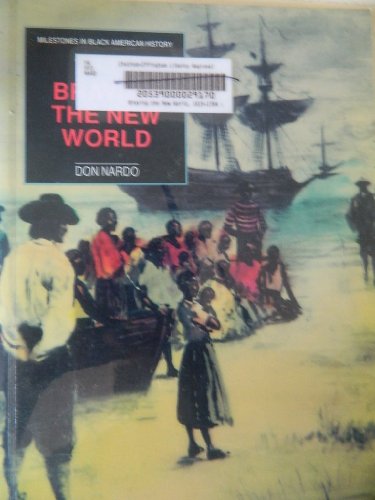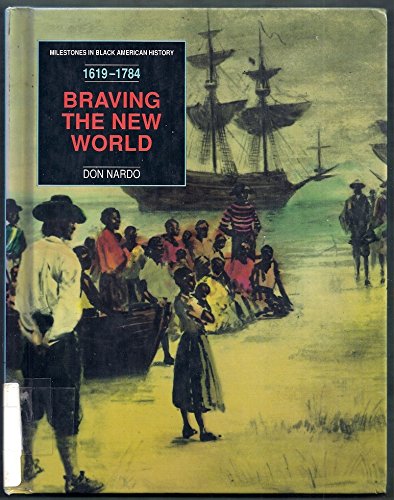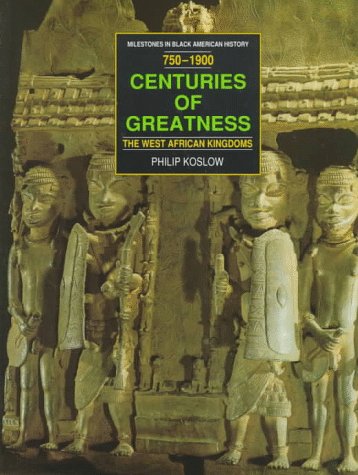-
Monroe Doctrine: The Cornerstone of American Foreign Policy
Edward J Renehan Jr
Hardcover (Chelsea House Publications, May 1, 2007)In 1823, President James Monroe expressed his opinion to Congress that European powers should not be permitted to interfere in the affairs of the sovereign states of the Americas. However, the United States did not follow the terms of its own policy. This work is suitable for students seeking to learn about the specific details behind this policy. Y
Y
-
Braving the New World 1619-1784 from the Arrival of the Enslaved Africa : From the Arrival of the Enslaved Africans to the End of the American Revolution
Don Nardo
Paperback (Chelsea House Pub, June 1, 1994)Covers the slave trade, interaction between whites and Blacks, the birth of Black American culture, and portraits of Black Americans X
X
-
Bound for Glory 1910-1930: From the Great Migration to the Harlem Renaissance
Kerry Candaele, Spencer Crew
Library Binding (Chelsea House Pub, July 1, 1996)Focusing on the unprecedented mass movement of African-Americans from the south to the north, a young reader's introduction examines their subsequent struggles and the cultural explosion that occurred in the 1920s.
-
Braving the New World: 1619-1784 : From the Arrival of the Enslaved Africans to the End of the American Revolution
Don Nardo
Library Binding (Chelsea House Pub, June 1, 1994)The story of American slavery includes the slave trade, interaction between free whites and enslaved blacks, the birth of black American culture--songs, religions, arts, language, and legends--and portraits of black American leaders, artists, and patriots. X
X
-
A Glorious Past: Ancient Egypt, Ethiopia, and Nubia
Earnestine Jenkins
Library Binding (Chelsea House Pub, Sept. 1, 1994)Beginning with the civilization of Ancient Egypt, with its mighty Pharoahs and monuments, a fascinating history moves on to the Nubians who were soldiers, scholars, and builders, and the Ethiopians who dominated Northern Africa and the Red Sea trade.
-
Centuries of Greatness: The West African Kingdoms : 750-1900
Philip Koslow
Paperback (Chelsea House Pub, May 1, 1994)Discusses the power of the West African kingdoms from 750, the founding date of ancient Ghana, to 1900 when the kingdom of Asante fell to the British Z
Z
-
Centuries of Greatness: The West African Kingdoms 750-1900
Philip Koslow
Library Binding (Chelsea House Pub, June 1, 1994)Spanning more than a thousand years of art, industry, warfare, and commerce, a sweeping account of the power and splendor of West African kingdoms covers the rise and fall of great kingdoms and the reigns of many ambitious leaders.
-
Bound for Glory 1910-1930: From the Great Migration to the Harlem Renaissance
Kerry Candaele, Spencer Crew
Paperback (Chelsea House Pub, July 1, 1996)This window into history examine the unprecedented mass migration of black Americans from the South to the North, their struggle to secure full citizenship, subsequent race conflicts, the explosion of African American culture in urban America, and the contributions of notable figures such as Louis Armostrong, Langston Hughes, Marcus Garvey, and Satchel Paige. 40 photos.
-
Glorious Past : Ancient Egypt, Ethiopia, and Nubia
Earnestine Jenkins
Paperback (Chelsea House Pub, July 1, 1994)Covers the history of ancient Egypt, Nubia, and Ethiopia and traces the rise and fall of these ancient civilizations Z
Z
-
The American Civil War: When Brother Fought Brother
Carole Marsh
Paperback (Gallopade, April 1, 2004)The 22-book American Milestone series is featured as "Retailers Recommended Fabulous Products" in the August 2012 edition of Educational Dealer magazine. When America was young, she was nearly torn apart! The new nation was already divided into tow separate worlds: North and South. These worlds collided when a newly elected Abraham Lincoln decided that he would use force to keep the Union together. Southerns like General Robert E. Lee believed that individual states should not be forced to remain in the Union against their will. "Preservation of the Union" became the battlecry when Southerners left the Union and formed the Confederate States of America. The South depended on slave labor to keep their agricultural economy growing. Many Northerns worked in factories. This cultural difference was another issue that divided young America. Between the first shots fired at Fort Sumter and the end of the war at Appomattox Court House, thousands of people died and many cities were destroyed. The Emancipation Proclamation changed the ugly face of slavery forever! Young men went off to war and came home legends. Many fought against their own brothers - and didn't come home at all! A partial list of the Table of Contents include:A Timeline of EventsWhen Brother Fought Brother: The America Civil WarHow Can War Be CivilNorth vs. SouthA Nation DividedSlavery Has Got to Go! Fort Sumter SurrendersWar Is No Picnic!: July 21, 1861Where is the Mason-Dixon Line? Battle of the Ironclads: March 8, 1862Women in the Civil WarFlags of the Civil War: SouthThe Bloodest Battle of the Civil War: September 17, 1862African Americans in the Civil WarCivil War LeadersAnd Much More! Q
Q
-
The Donner Party: A Doomed Journey
Tim McNeese
Hardcover (Chelsea House Publications, April 1, 2009)This title details the trials faced by a group of settlers trying to journey west from Illinois to California in the mid-1840s. Stranded in a snowstorm in the Sierra Nevada Mounatians, the party resorted to cannibalism to survive. T
T
-
The Declaration of Independence: Quit Bossing Us Around!
Carole Marsh
Staple Bound (Gallopade, Nov. 1, 2004)The 22-book American Milestone series is featured as "Retailers Recommended Fabulous Products" in the August 2012 edition of Educational Dealer magazine. In this book, kids will sit in the same room with Jefferson as he frets over the best words to convey his message. They will stand in line with the great American patriots as they ink their signatures on the parchment. And they will cheer with the crowds of colonists as the founding fathers read aloud one of the most cherished documents-the Declaration of Independence! A partial list of the Table of Contents include: A Timeline of EventsThe Declaration of IndependenceA Declaration of FreedomThe French and Indian WarThe Brits Won't QuitJohn Locke's New DealWhat Do We Want? The Dunlap BroadsidesWhat Does the Declaration Mean Today? In Plain EnglishJefferson's Rough DraftFounding FathersAnd Much More! Q
Q